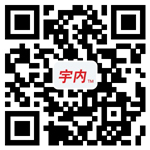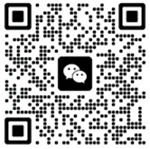How to check the half shaft? Semi-axis inspection guide
Information sources: | Release date:
2018-03-15
| Browse volume:
Key word:How to check the half shaft? Semi-axis inspection guide
Changzhou New Universe Forging Co., Ltd. is committed to the development and production of long shaft parts and drive shafts. The main products are forgings on the crankshaft of the press, various gears, ring gears, cylinders and various modules. Let's share a semi-axis inspection guide for everyone. Let's take a look.
The half shaft, also known as the shaft, is only suitable for rear-wheel drive vehicles. They have relatively few faults during normal driving, even though they are highly stressed parts.
The inner end of the shaft is supported and driven by a differential, and the outer end is supported by bearings between the shaft and the shaft housing.
These bearings have built-in or separate oil seals. The bearings can be ball bearings, tapered roller bearings (both with inner ring), or linear roller bearings with shafts as inner rings.
When the half shaft fails, the rear wheel cannot be driven.
When accelerating or decelerating, the main symptom of a worn half shaft is a knock or impact. The reason is that the shaft and differential splines are too worn.
However, if the crown wheel and pinion in the differential are not properly engaged, the transmission pinion method is worn or the drive flange bolts are loose, which may cause the same symptoms.
If you are not sure about the noise source, please consult the garage. Special tools are needed to check for wear in components such as gears and pinions, called backlash.
Oil leakage, especially from the end of the bushing, is caused by oil seal failure. The half shaft must be removed and the seal replaced.
Disassemble the half shaft
Pass a socket and extension through the through hole in the flange to remove the fixing bolt or nut. The main work of the rear axle assembly requires special skills and equipment that can only be used in the garage. However, it is relatively easy to disassemble and inspect the half shaft.
The slide hammer is the only special tool needed to remove the half shaft. Loosen the wheel nut and lift the rear of the car to securely support the bushing on the pedestal. Remove the wheel and brake drum. On some vehicles, it may be necessary to disconnect the brake pipe. Determine by visual inspection or by referring to the car service manual. If the brake line must be disconnected, the brake system must be relaxed later.
After removing the roller, you will see a flange at the end of the axle shaft, or forge as part of the shaft, or bolt it. The shaft will be secured by a bolt retainer or internal retainer behind the flange. Replacing the transmission oil seal describes the method of handling the internal retainer. Most flanges have two large holes for bolt holders.
The socket wrench can remove the fixing nut or bolt through the hole. You should then be able to attach the slide hammer to the shaft flange and remove the shaft and bearing from the axle box. Secure the slide bolt to the half shaft flange and retract the shaft in a stable and smooth stroke.
Before using the slide hammer, make sure there is nothing else to hold the holder. The bolts that hold the fixing plate can also fix the backing plate. If this is the case, release the retainer and reinstall the two bolts to secure the brake assembly in place.
In the case of a car with a half-shaft held by the inner retainer, it is necessary to disconnect the drive shaft, take out the differential pinion shaft and push it on the half shaft so the C-gasket retainer can be removed and the shaft slides from the axle housing.
Secure the ram on the half-shaft flange and begin to hammer firmly and slowly pull out the shaft. Excessive force can damage bearings that you might intend to reuse. Be sure to slowly and evenly tighten the fastening fittings to avoid damage or deformation. When the spline end is free, the shaft will tilt; try to keep it level to avoid damage to the bearing and oil seal.
Check shaft, bearing and oil seal
Take the half shaft to the workbench (unless it is clearly broken) and carefully check along its length for friction marks or "high points" that can be seen as flash points on the metal. Use straight edge rules to check if it is distorted.
Never hammer a slightly twisted shaft to try to straighten it. It can only be clarified in the press. If the deformation is severe, a new axis must be installed.
Pay special attention to the spline end. They must be in perfect condition with no signs of wear. Clean the bearings with paraffin and check for pitting corrosion on the balls and raceways. Severely worn bearings will run roughly and will feel unstable under extreme conditions.
After cleaning, lubricate the bearing with fresh oil, place it close to your ear and listen carefully. As a harsh sound, rough running will be clearly audible. However, it is recommended to automatically update the bearing whenever the shaft is disturbed.
Removing and replacing bearings is a precise operation and usually requires a hydraulic press. It is best to leave it to the garage. The bearing can be hammered and returned, but there is a risk of twisting the shaft.
Bearings with integral oil seals are usually held by a collar or ring and must be separated by a chisel before disassembly.
It is better to do this job professionally.
If the seal is not integral with the bearing (on some older cars), it can be sealed and replaced before reinstalling the axle.
Clean and gently lubricate the entire shaft and gently push it into the sleeve until you feel the end hit the differential side support spline.
Move the shaft until the spline engages and then push it fully into the center of the flange with a soft-faced hammer. Do not strike the flange on its edge or steel hammer as it may be damaged. The reassembly and disassembly of flanges, brake drums, brake hoses and wheels is reversed.
After reinstalling the axle, lower the car onto the wheel, check the rear axle oil level, and top up if necessary

